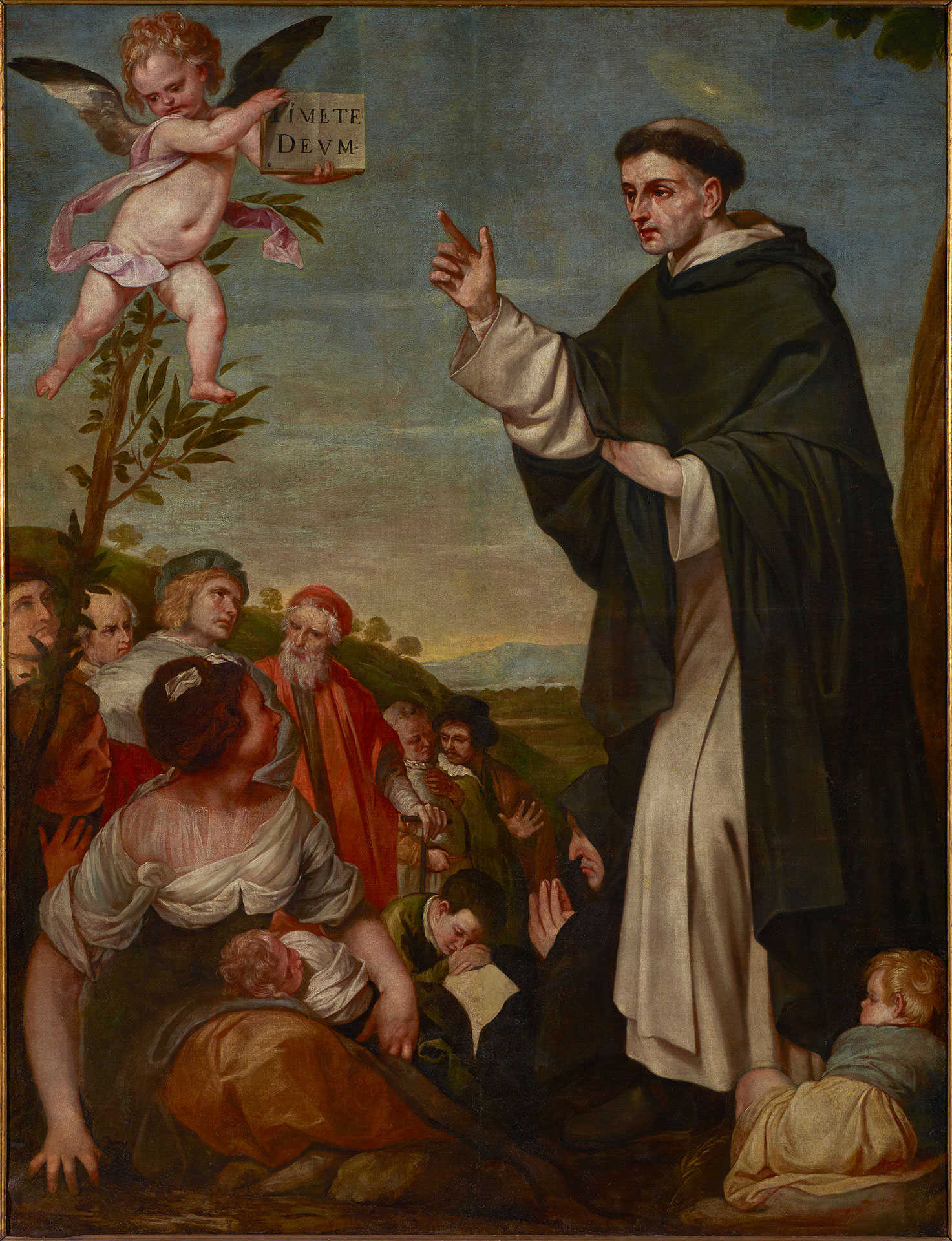
Alonso Cano (Granada, 1601-1667)
St. Vincent Ferrer Preaching
circa 1644–1645
WORK INFORMATION
Oil on canvas, 214 x 168 cm
The two large works by Alonso Cano in the Banco Santander Collection correspond to different periods in the life of the Granada-born artist. Architectural planner, altarpiece designer, sculptor and painter, he learned to paint under Francisco Pacheco and to design altarpieces with his father Miguel. He worked in Seville until 1638, the year he travelled to Madrid. After staying in Valencia for approximately one year (1644–1645), he returned to the court. Cano then spent five years in Granada, returning to Madrid again in 1657 and staying there until 1660. Back in Granada, he was made a canon in the cathedral after being ordained as a priest, and there he remained until his death, except for a brief stint in Málaga (1665–1666).
Palomino wrote that Cano worked in Valencia for the Monasteries of San Juan de la Ribera and San Francisco and the Carthusian Monastery of Portacoeli. He mentions a painting in a chapel of the Franciscan church, off the Epistle aisle, of Valencia's patron saint, St. Vincent Ferrer Preaching. We know of another version (Museo de Bellas Artes, Valencia), slightly trimmed like the one commented here, in which the cherub above the tree and the child at the saint's feet are cut down and grafted. The museum work reveals several branches that are not visible in the Banco Santander Collection version. There are no other known Cano paintings made in Valencia, where the distraught artist went after being falsely accused of his wife's murder on 12 June 1644 by a poor man who worked as his model.
Of all his previous works, this one seems to be most closely related to The Miracle of the Well (1640, Museo del Prado), whose composition also features a vertical full-length figure and other bent or crouching figures, including children. Realism dominates the whole, with varying degrees of detail in the group and meticulous observations, for example in the three children. The austerity of the saint's habit contrasts with his surroundings. The precise drawing of his head leads us to believe that Cano used a real model.
The Education of the Virginhas always been considered an excellent work, and its quality has been enhanced by recent restoration work. Opinions on the date of its execution are more varied. It has been identified with the painting mentioned by Ceán at the convent of Discalced Mercedarians in Seville. In 2001 Calvo Castellón proposed a date around 1651. We have recently expressed our agreement with this hypothesis. The work may be connected to Cano's acquisition, at the auction of the assets of the painter Domingo Guerra Coronel, of a print with the Virgin and Saint Anne that same year, for it denotes the influence of Schelte a Bolswert's engraving after Rubens which, in addition to including St. Joachim, presents numerous differences, starting with the reversal of the image. We also find similarities in the drawing of the Virgin and Child Appearing to St. Aloysius Gonzaga (before 1651), made for the Chapel of Nuestra Señora del Buen Consejo at the Colegio Imperial and now in the British Museum, such as the angels with draperies and the railing.
It could have been an altarpiece painting, given the dimensions, though it might also have been intended for private devotion. The setting on a carpeted terrace with a balustrade open to the landscape is of Rubensian inspiration, though it was also used by Velázquez; the opulence and folds of the curtain, as well as the foreshortening of the three cherubs, are typical of Cano's work. The almost semicircular composition with a calculated interplay of curves is masterfully combined with the vertical fall of the draperies and the saint's head covering. The classically balanced colours, ranging from red to purple, gold, and blue and white, serve to underscore the age difference between mother and child, in keeping with apocryphal tradition, emphasising St. Anne's grave preoccupation in contrast to the pensive innocence of the young Mary. [José Manuel Cruz Valdovinos]

